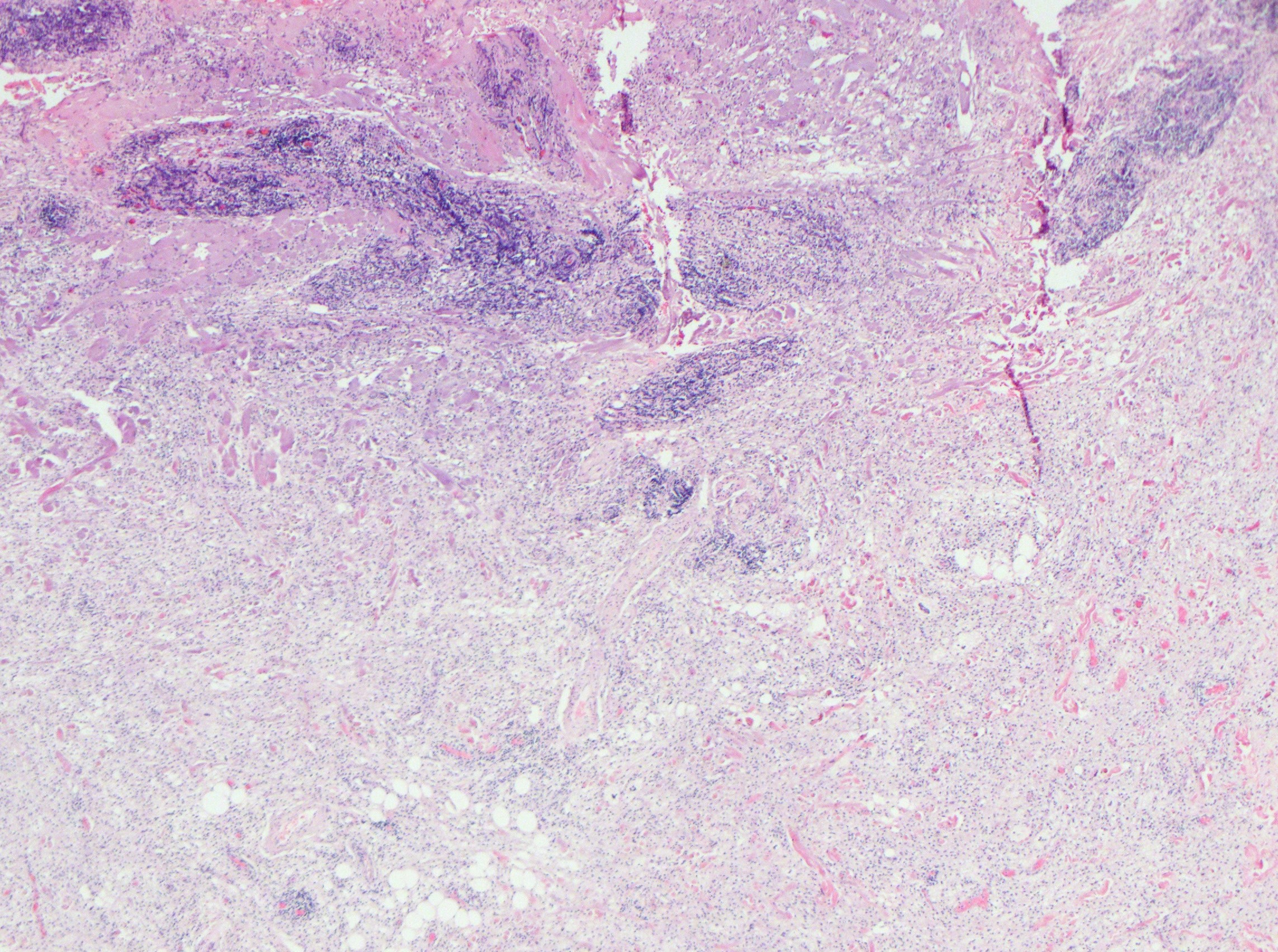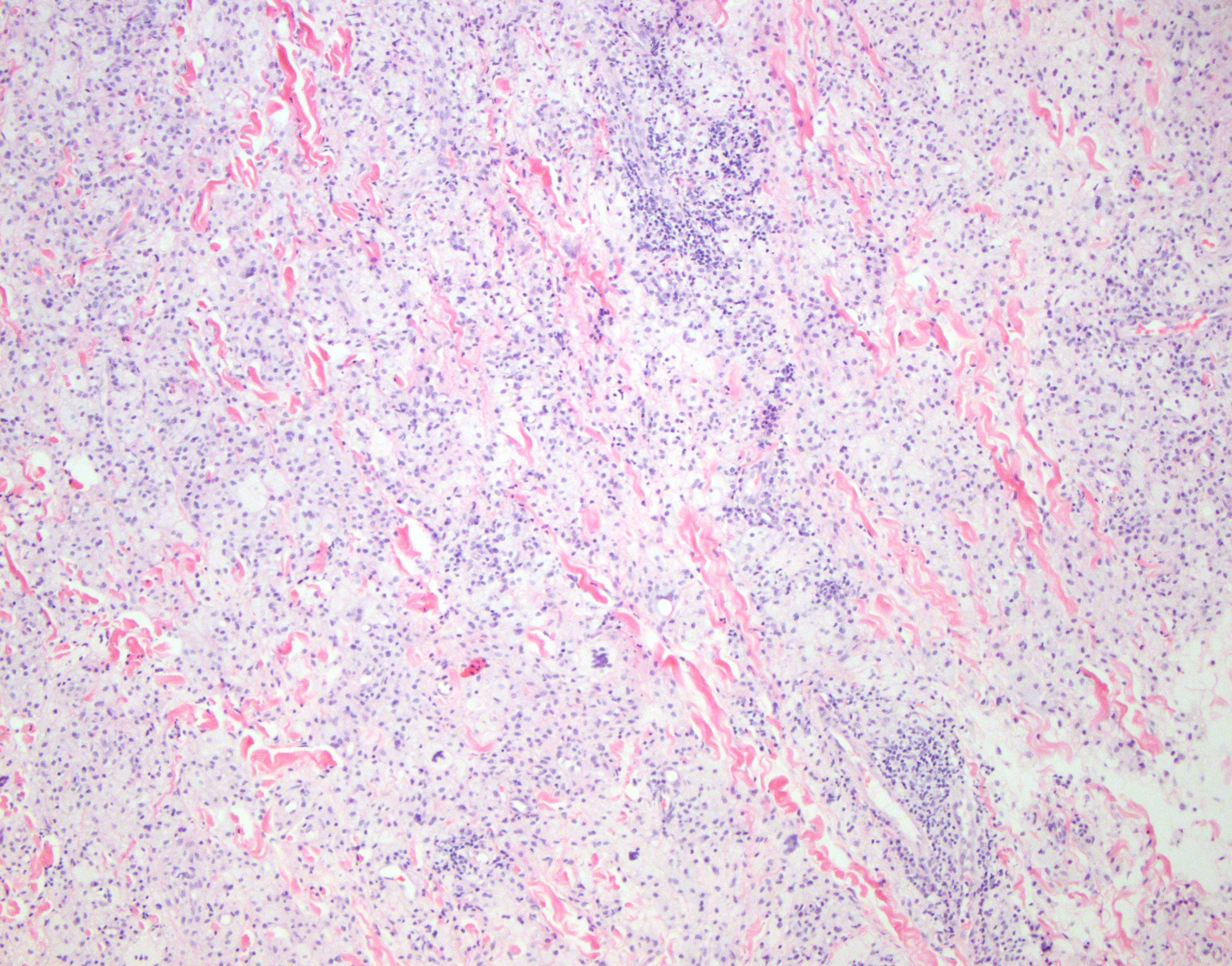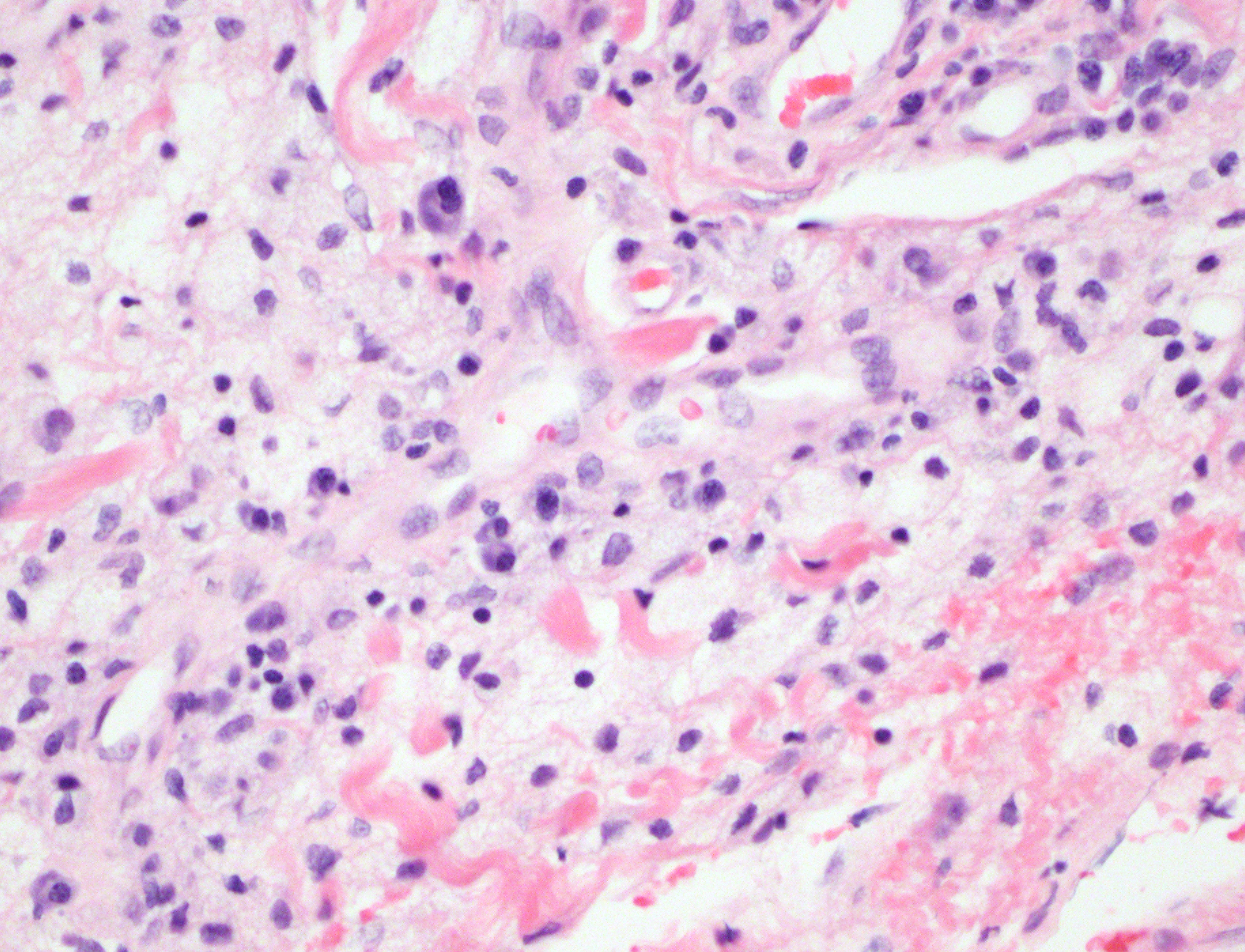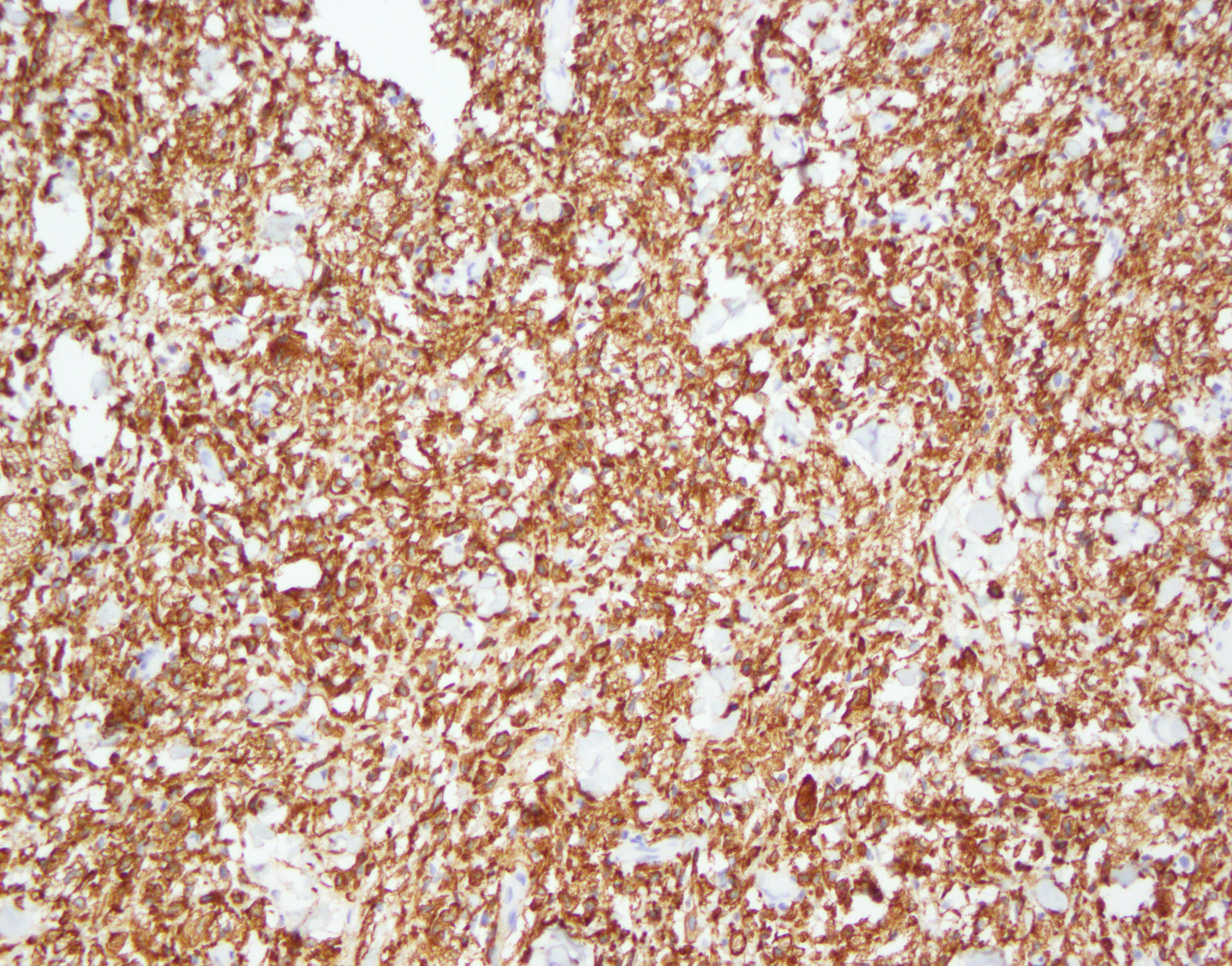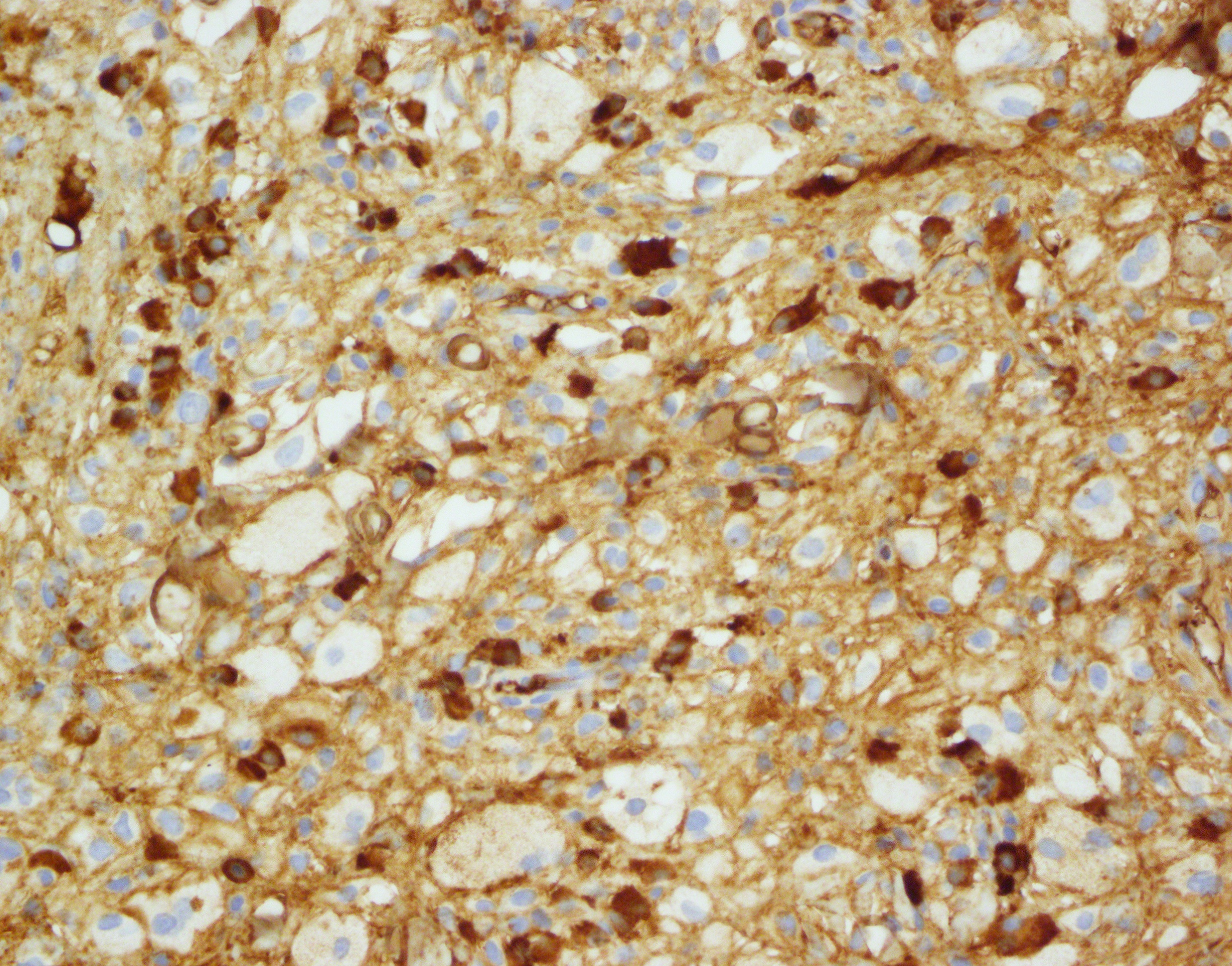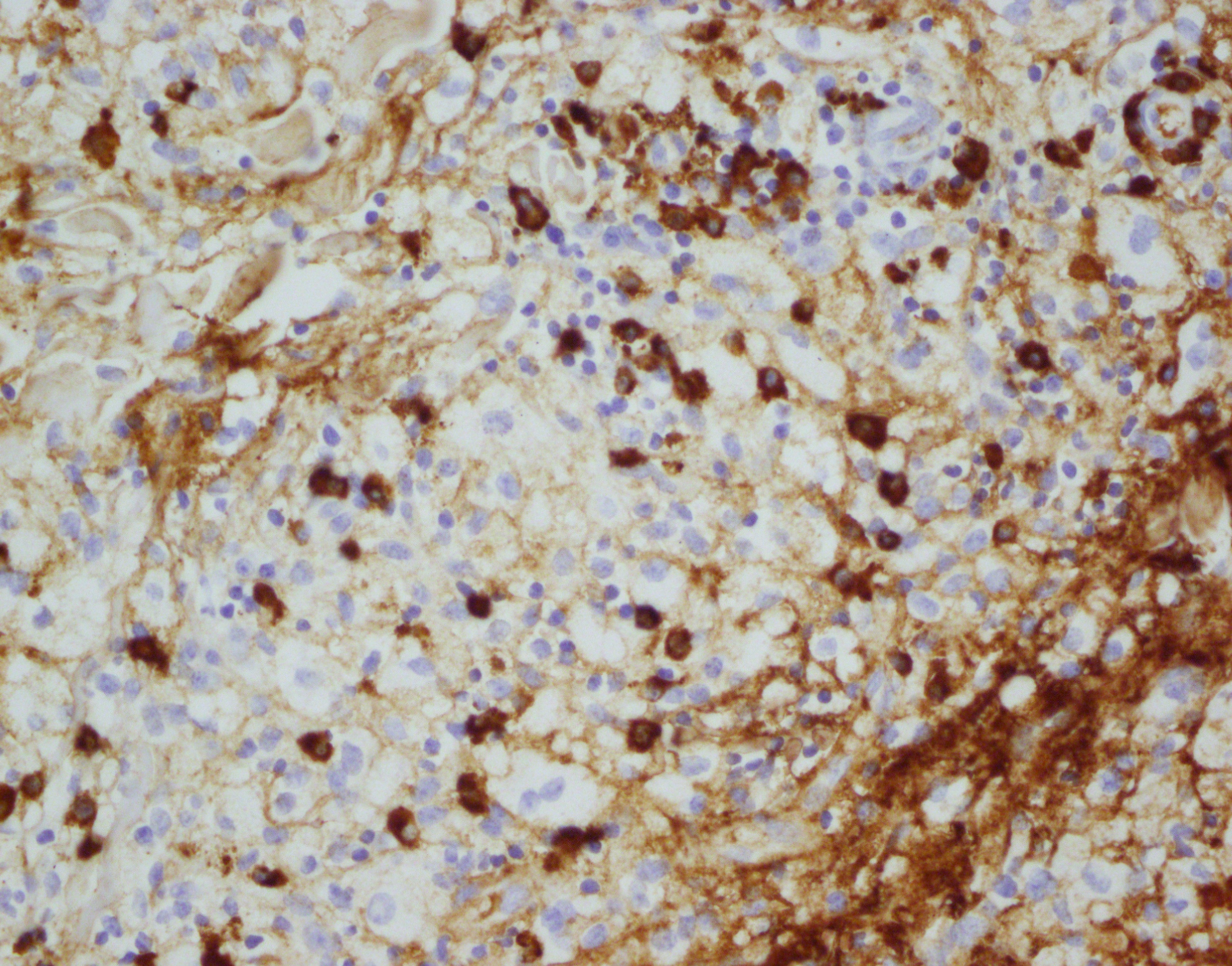Final Diagnosis: Adult Xanthogranulomatous Disease of the Orbit Possibly in the Setting of IgG4 Related Disease
Diagnosis comment: The patient's biopsies show a very classic picture of adult xanthogranulomatous disease of the orbit. In particular, there is a very striking and massive infiltrate of well-differentiated histiocytes that have abundant vacuolated cytoplasms reflective of intracytoplasmic lipidization. The cells are predominantly mononuclear, but there is this minor Touton giant cell component.
As is oftentimes the case with xanthogranulomatous disease of the orbit is this background infiltrate of lymphocytes including germinal center foci, plasma cells, and eosinophils almost defining a pattern of lymphoid hyperplasia reminiscent of certain Th2-dominant immune dysregulatory forms of lymphoid hyperplasia.
The histiocytes that define this lesion have a monocyte-derived dendritic cell phenotype revealed by the expression of CD4 and the monocyte-derived dendritic cell marker, CD11c. As for the lymphocytic infiltrate, the dominant infiltrate is a CD4-positive T cell, while there is a minor B-cell component that includes benign reactive germinal centers highlighted by CD21, but as well there are a number of IgG4 positive-staining plasma cells whereby where the plasma cells are concentrated the IgG4 to IgG ratio is greater than 0.4 to 1, a finding that can be see in IgG4 related disease and which potentially can be explained by a Th2 microenvironment inducing IgG4 isotype switching.


